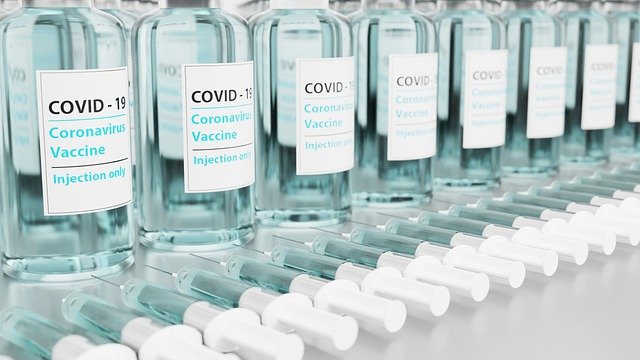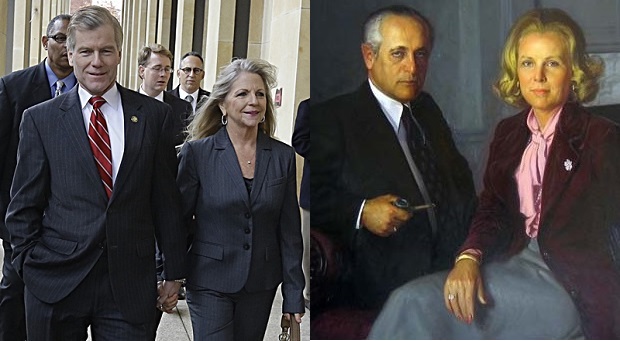One year into this global pandemic, we’ve lost more than 500,000 of our fellow Americans and close to 8,000 in Maryland. The approval of multiple, safe, and effective vaccines is a turning point and should inspire hope.
Thus far, Maryland has fallen far short in our vaccination efforts. Our state is currently ranked 45 out of our 50 states in terms of the percentage of shots administered. A major reason why Maryland has ranked so low in vaccinations is the state’s lack of a simple and centralized process to sign up and get a vaccine.
In addition to our disorganized and fragmented approach to vaccinations, Maryland has left our most vulnerable populations behind.
Black, brown and low-income communities who have been disproportionately impacted by the COVID-19 pandemic are struggling to access the vaccine. White Marylanders have received more than four times as many doses of the vaccine than Black Marylanders, an embarrassing statistic given that Black residents are more likely to die from the disease.
Just 16 percent of vaccinations have gone to Black Marylanders, even though they make up 30 percent of our state’s population. In my home county of Prince George’s, a majority-Black county in the state, we have seen the highest rates of infection, but the lowest percentage of residents vaccinated.
Likewise, approximately 4% of the vaccines have gone to our Latino neighbors who account for 11% of the population. It’s become far too clear that there’s a deliberate and devastating pattern of inequity within the distribution of this vaccine.
We have no other choice at this point but to take bold action and address this disparity gap. Governor Hogan’s Vaccination Equity Task Force simply does not go far enough to reverse the inequities that have taken place since January.
While the Hogan administration has highly touted this equity plan, it still does not implement many of the changes demanded by localities serving Black, Latino, low-income, and other underserved populations in our state. Community leaders have made it clear that we need deliberate steps to increase access to the vaccine in the hardest-hit areas of the state, something that the state has been reluctant to do thus far.
Prince George’s County, Baltimore City, and Charles County, all majority-Black jurisdictions, are ranked at the bottom of populations who have received either the first or second dose of the vaccine. Governor Hogan must be willing and ready to allocate more vaccines to these areas and ensure the state is prioritizing those most at risk by ensuring they are at the front of the line as local health departments waiting lists continue to grow. As we work in collaboration with hospitals and private pharmacies, shots need to be prioritized for people who need this life-saving vaccine the most, not just those who can secure appointments the easiest. And, if mass vaccination sites are going to be the foundation of the state’s strategy we have to ensure appointments are actually reserved for local residents. At the Prince George’s Six Flags mass vaccination site, for example, Prince Georgians, 64% of whom are Black, only make up 11% of residents vaccinated at the site. And in Baltimore City, where Black people make up 62% of the population, only 34% have received the vaccine.
Listening to our communities is important, but true equity is won through action.
We can, and we must do better.
Congress has already passed more than $27 billion for vaccine production and distribution, and we’re prepared to invest $20 billion more in the upcoming COVID rescue package. We’re providing suppliers, emergency response, testing, and increasing the number of doses sent to states.
And in part through that effort, the Biden administration has announced that the U.S. will produce enough vaccines for every adult in the U.S. by the end of May, moving up the timeline from the end of July. The president’s plan gives states the long-overdue support they need by increasing vaccine supply, vowing to be transparent, eliminating barriers to swift and equitable vaccine distribution and administration, and providing much-needed funding.
It’s up to Maryland to get shots into arms, and the most efficient way to do that is through a centralized system and making equity the leading priority in its rollout. The current system simply does not work for working families.
Every day I hear from constituents and local officials about their frustration and confusion with the state’s inefficiency. And every day the state waits to set up a one-stop portal slows down our best path toward defeating this pandemic.
States like New Mexico, West Virginia, and New Hampshire have successfully implemented centralized vaccination sign-ups and lead the rest of the country for administration. As a result of their success, multiple states are preparing to launch centralized vaccine sign-ups. I introduced legislation to streamline vaccination registrations throughout the country.
The Vaccine Administration Centralization to Coordinate and Improve National Execution Act, or VACCINE Act, would incentivize states to create a one-stop portal. It would provide grants to every state to create and maintain a centralized system for residents to register for a vaccine through a modernized streamlined process. With widespread support for a centralized system across the country, it’s become increasingly clear that Maryland must take action or risk being left behind.
Our system must be multi-pronged. As Maryland receives more vaccines, we must centralize our sign-up system and place vaccine sites in poorer communities where there are larger numbers of Black and Latino residents.
Working families are juggling jobs, schooling, childcare, and daily life all while the pandemic rages on and compounds these challenges. We owe them more than a disjointed vaccination strategy and we shouldn’t allow our residents to rely on luck to secure a dose for this vital vaccine.
Vaccine equity needed to be a priority for Maryland from the very beginning. Elected leaders have already offered many workable solutions to address these inequities and we haven’t seen an attempt at a course correction until three months into the vaccine rollout.
I’ve been disheartened by Governor Hogan’s delayed approach to address these inefficiencies and inequities and even more, his unwillingness to work with local leaders on finding a system that works.
It’s time to regain public trust in our vaccination plan, get more vaccinations in residents’ arms, and get through this pandemic together. We owe this to our residents who’ve been so badly impacted by this pandemic.








Recent Comments